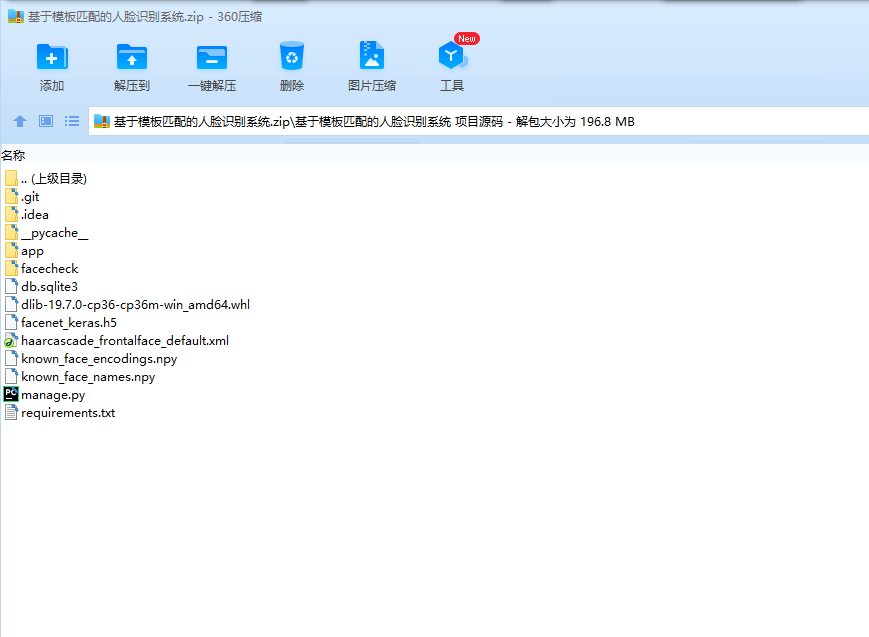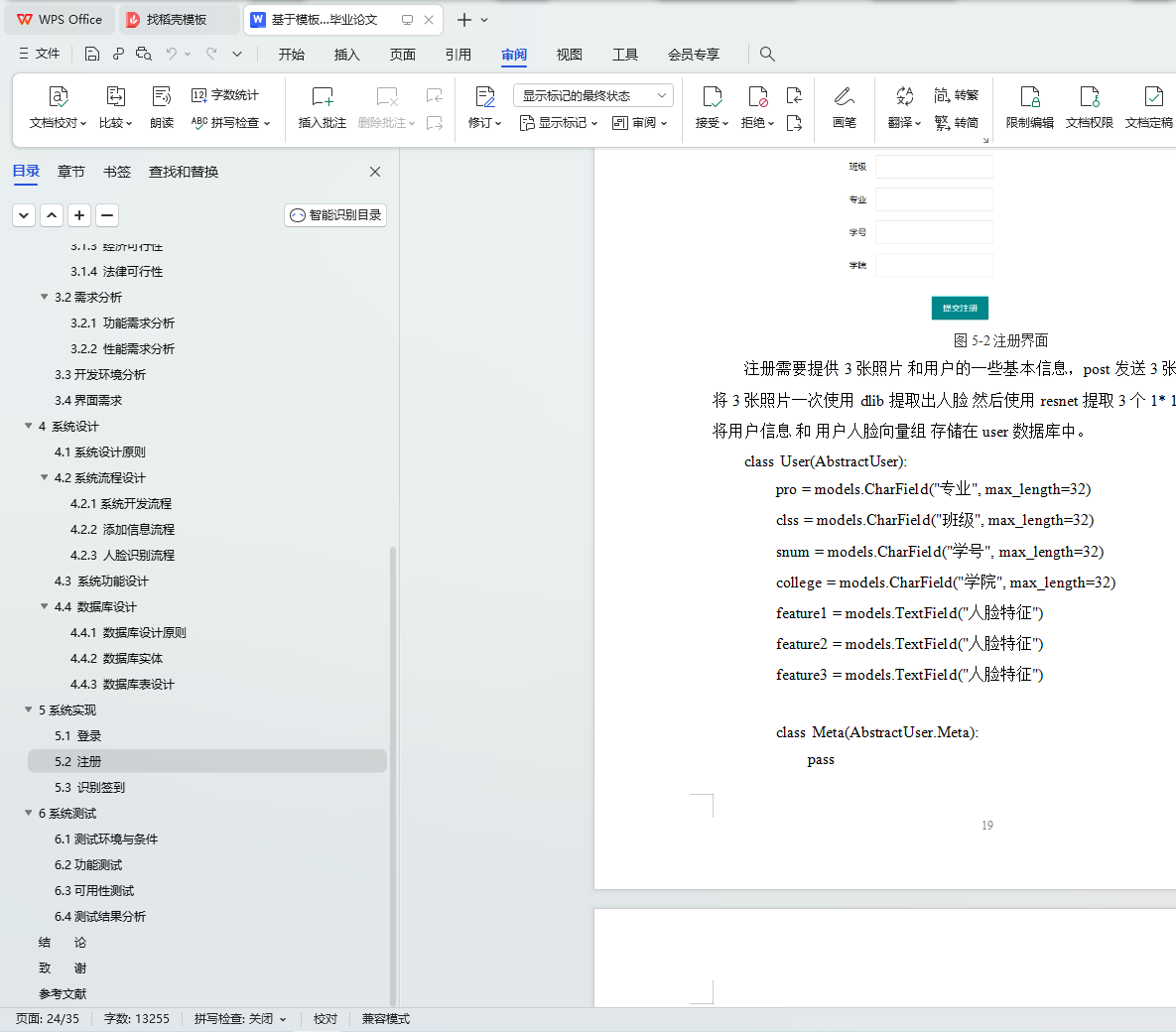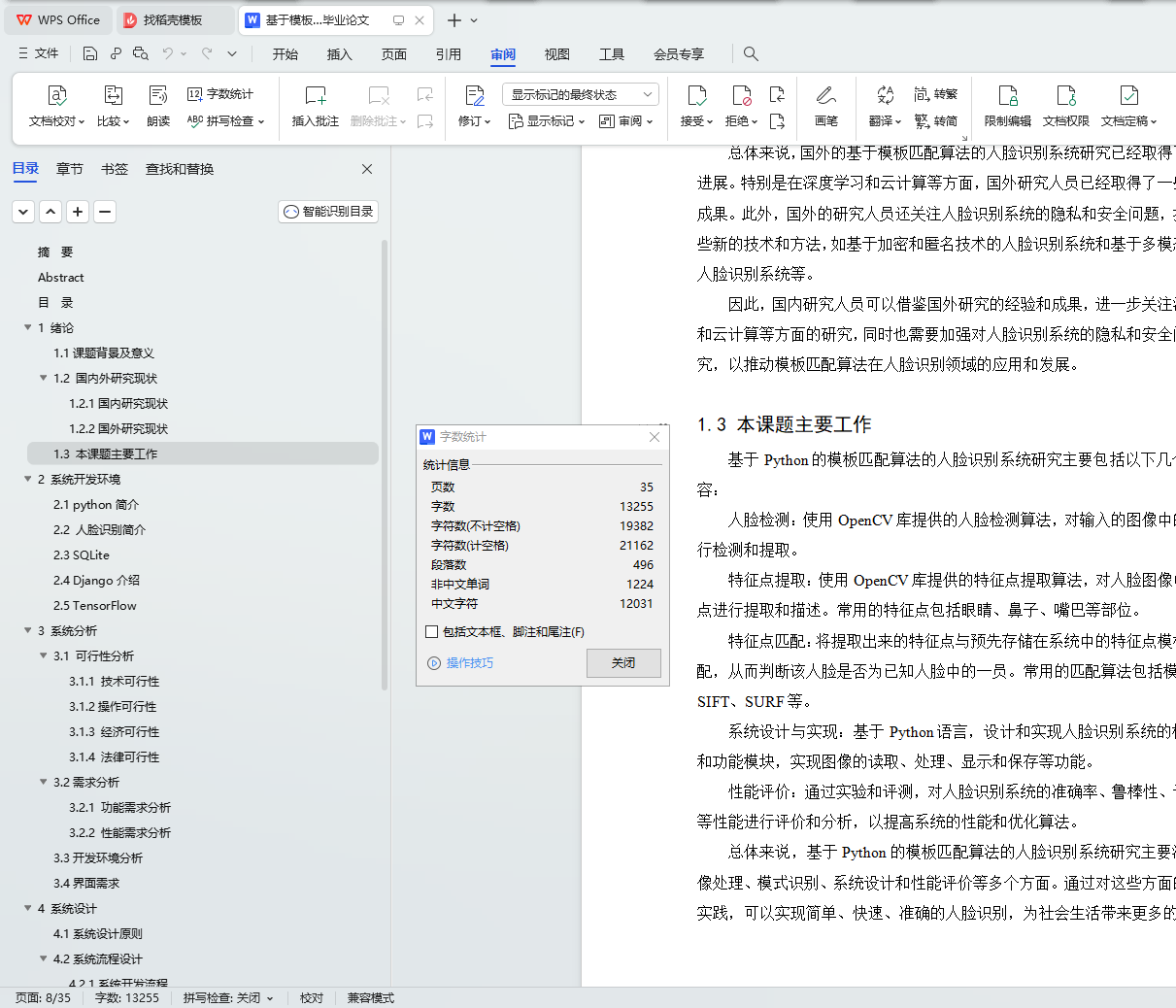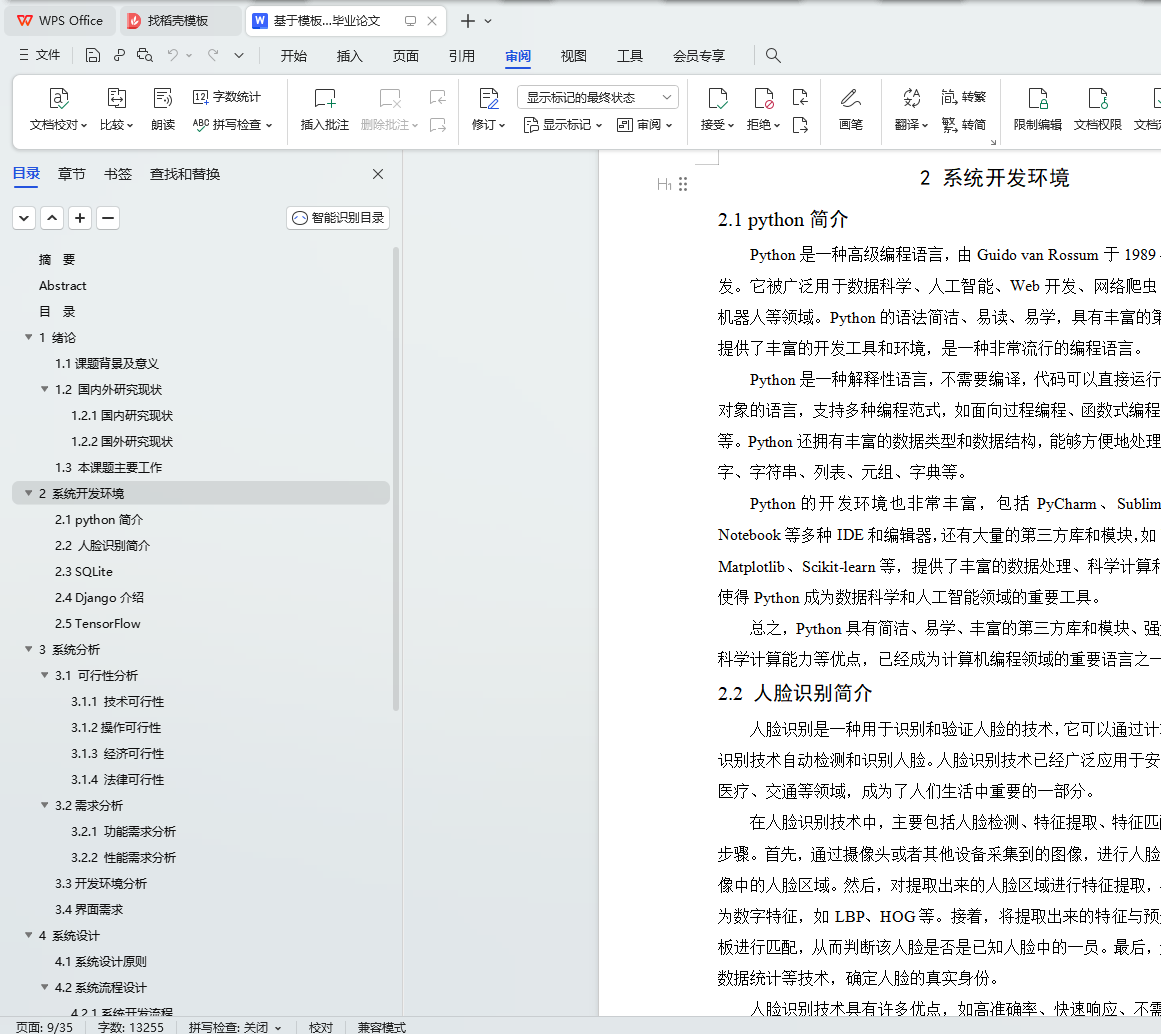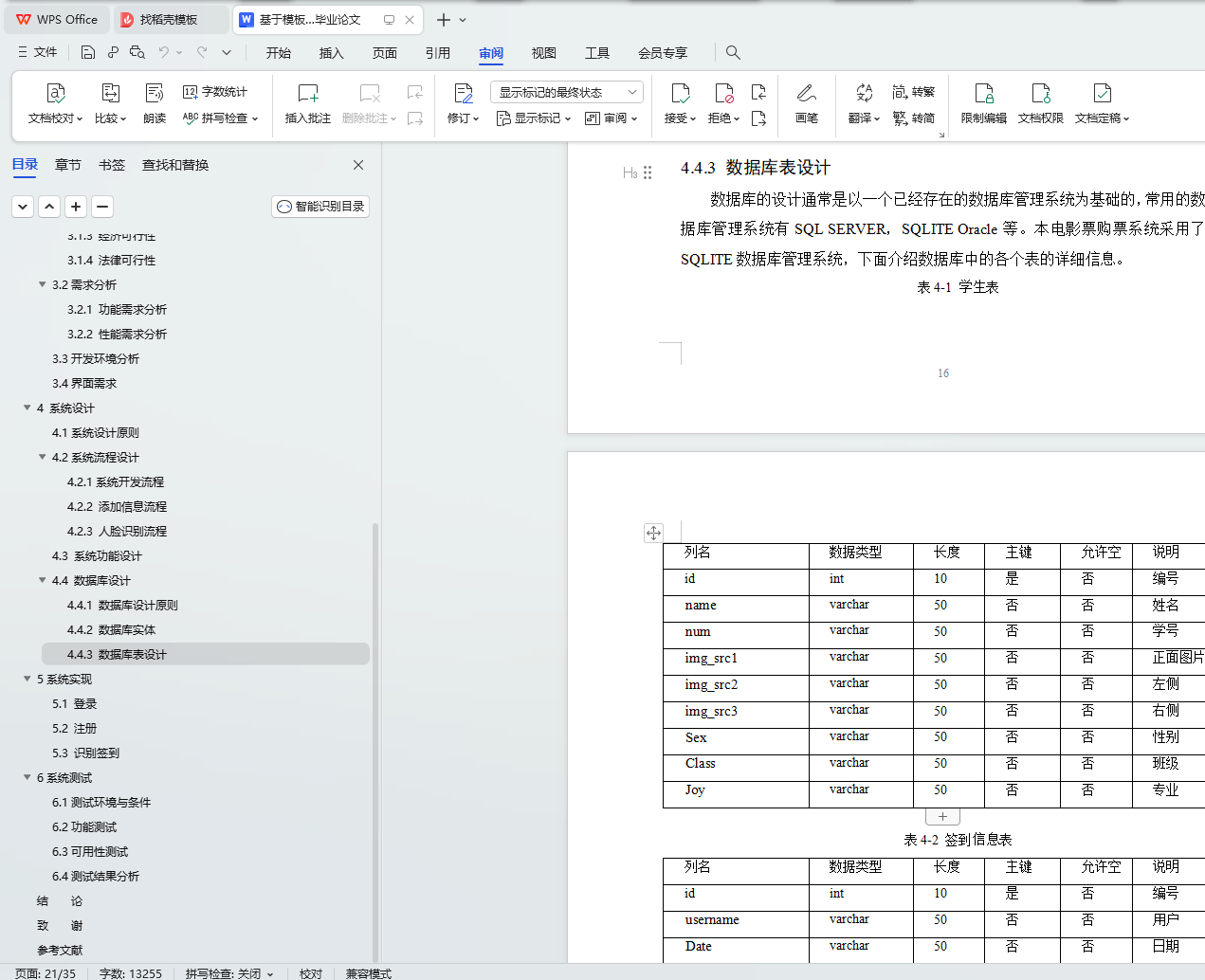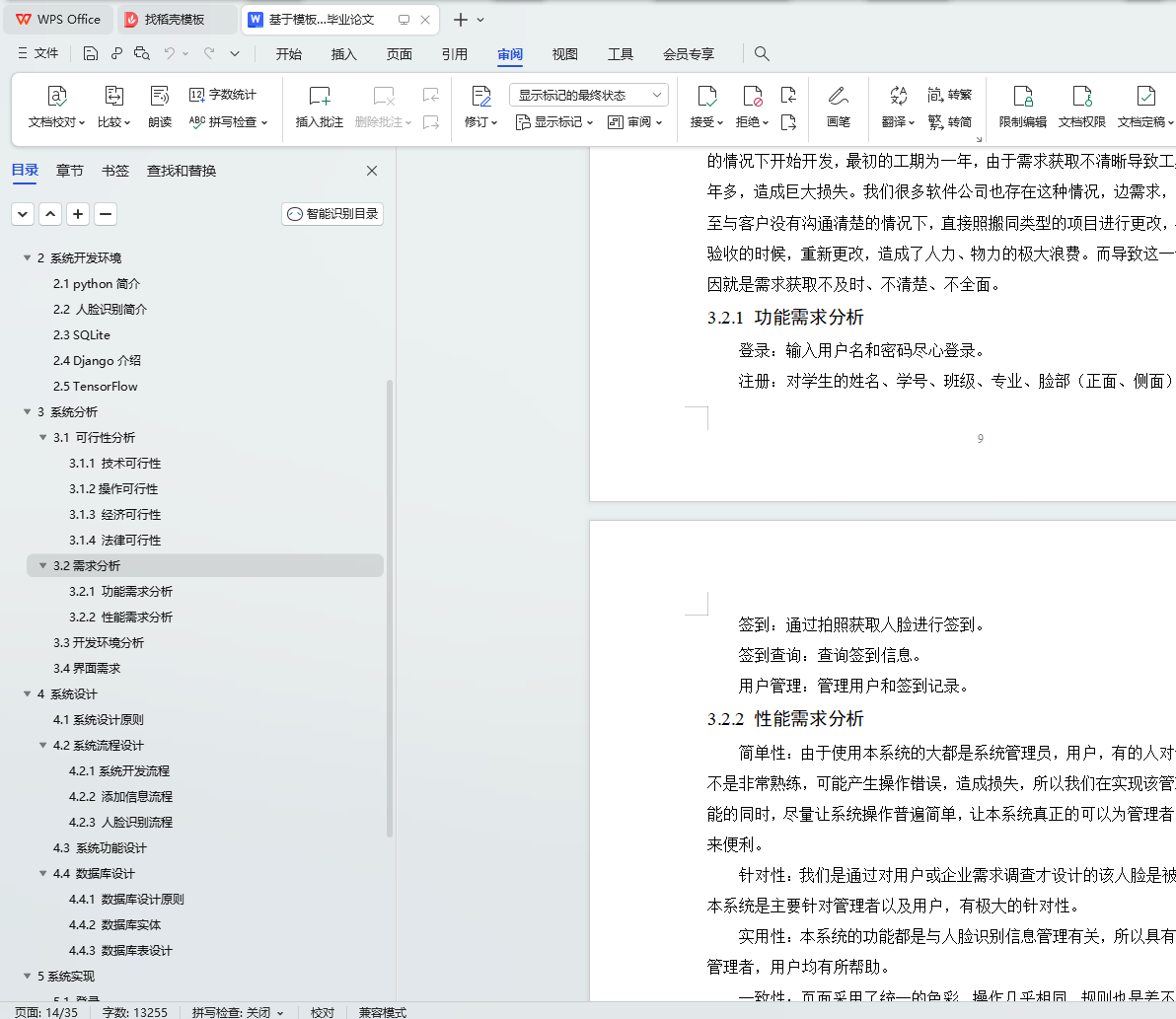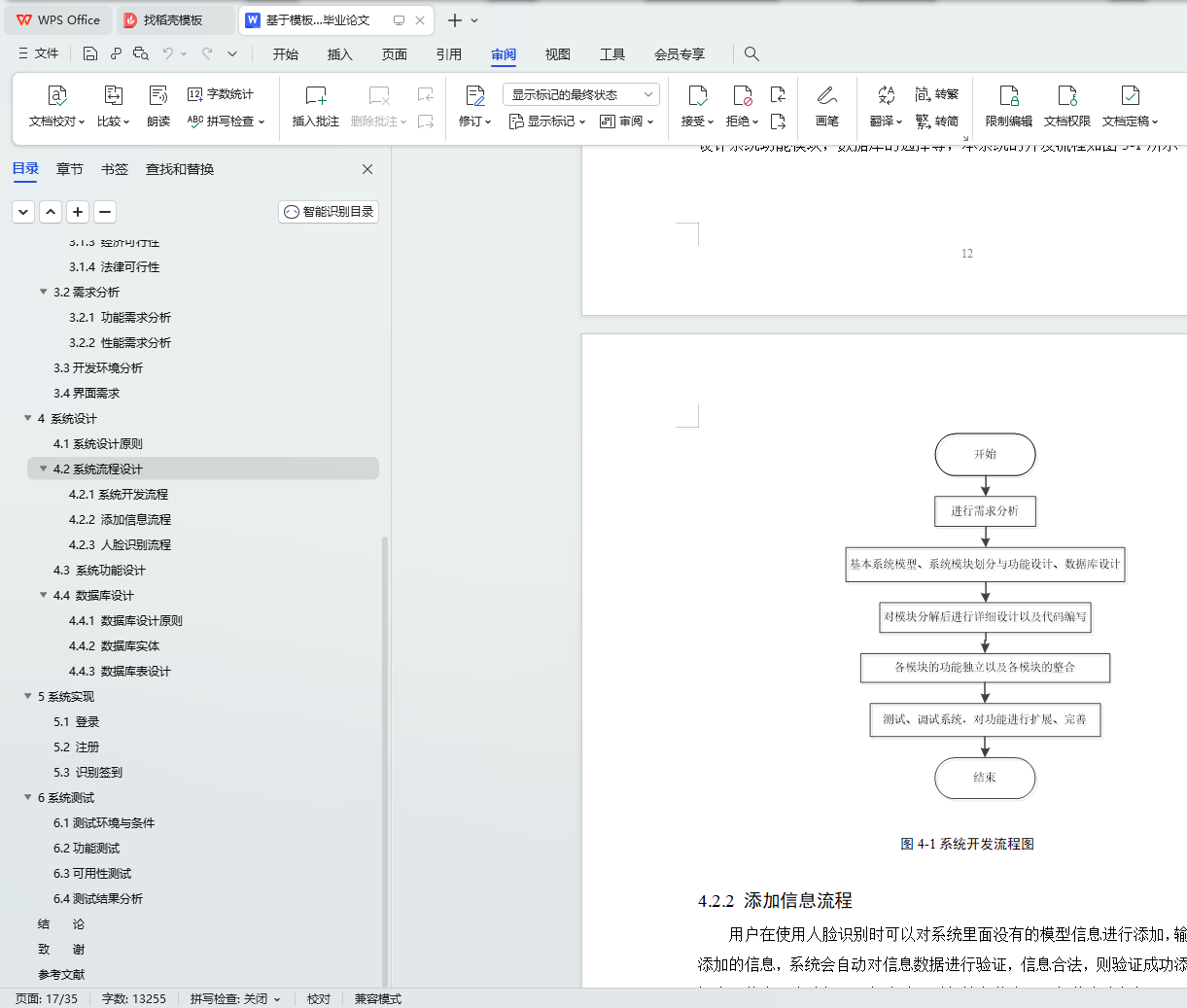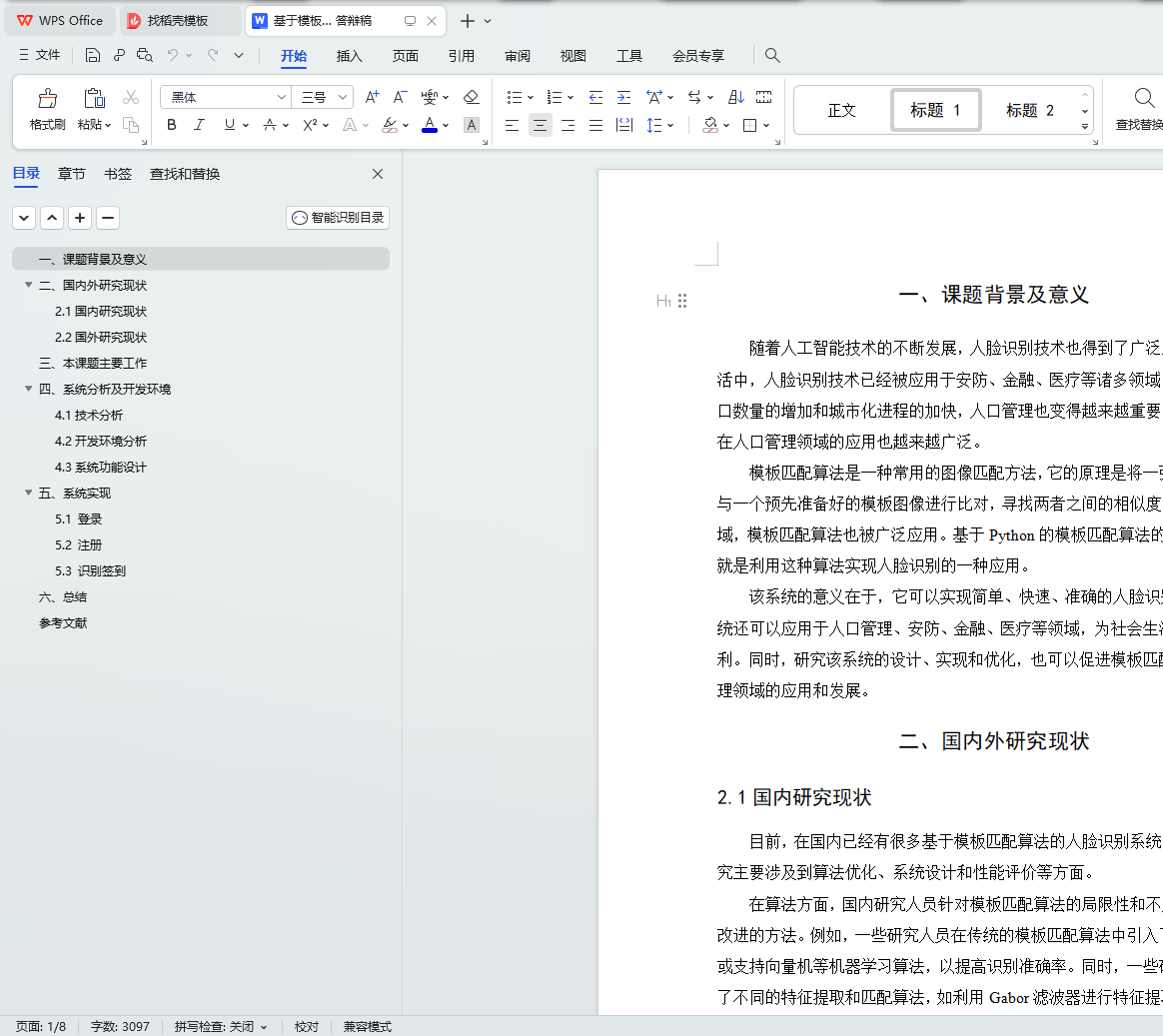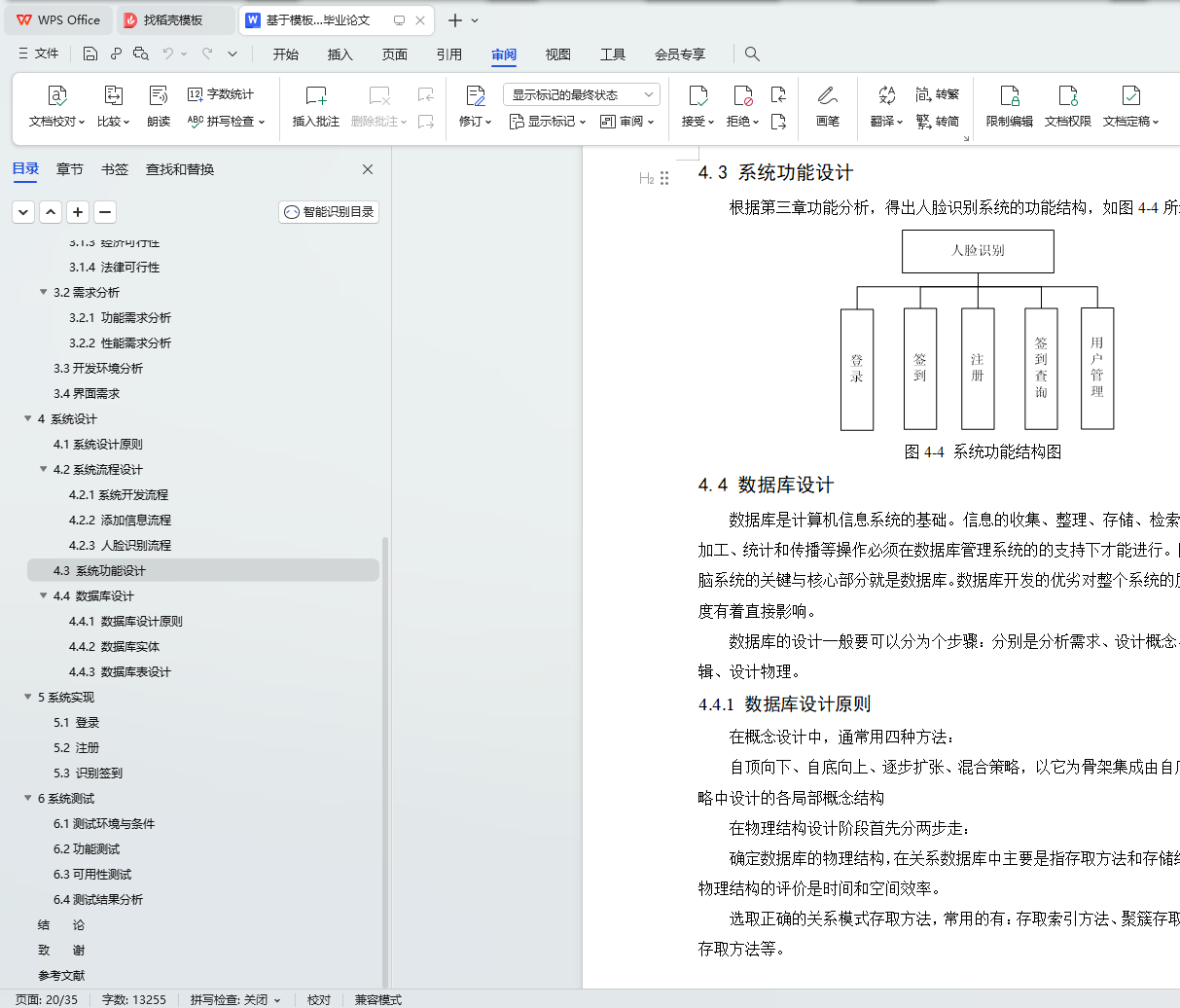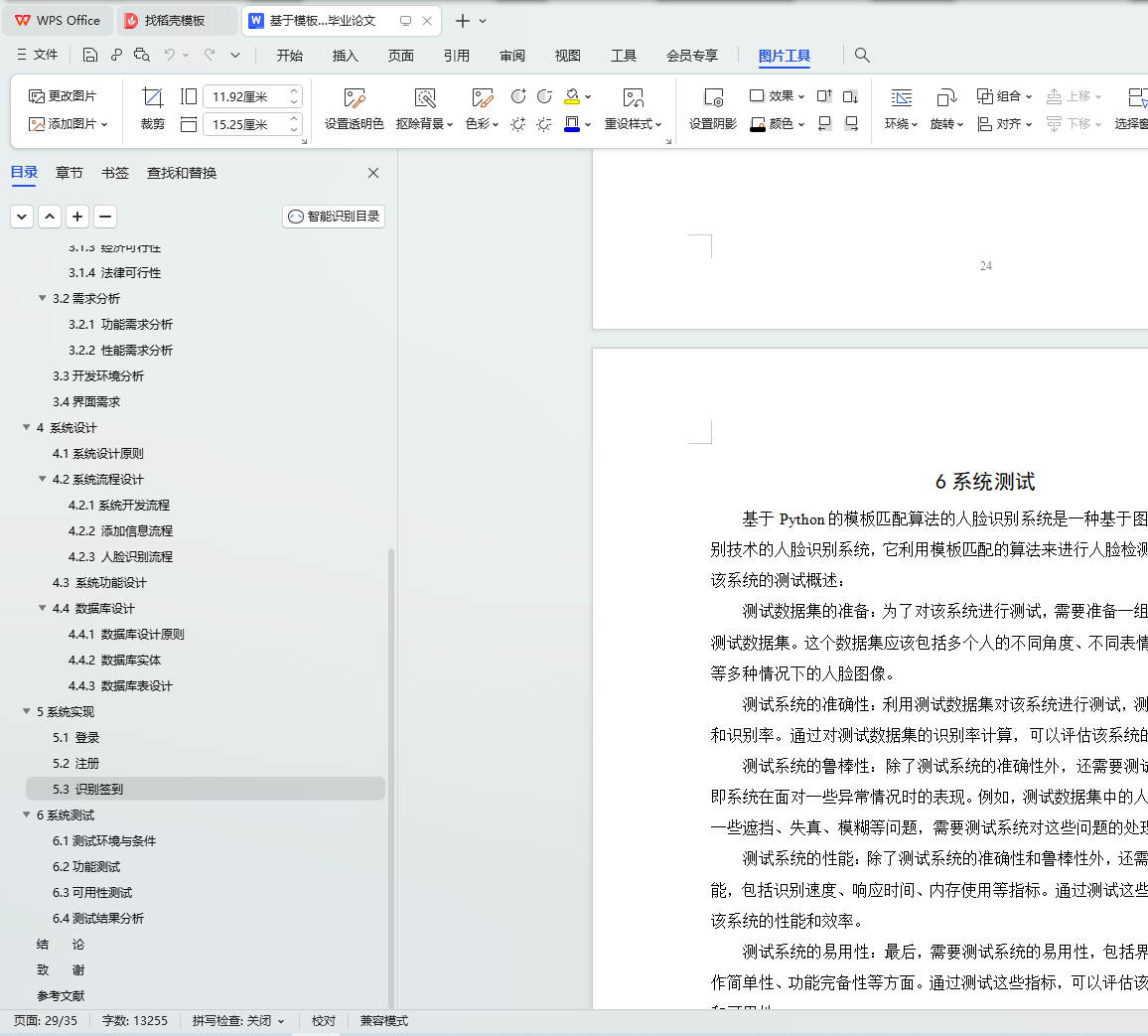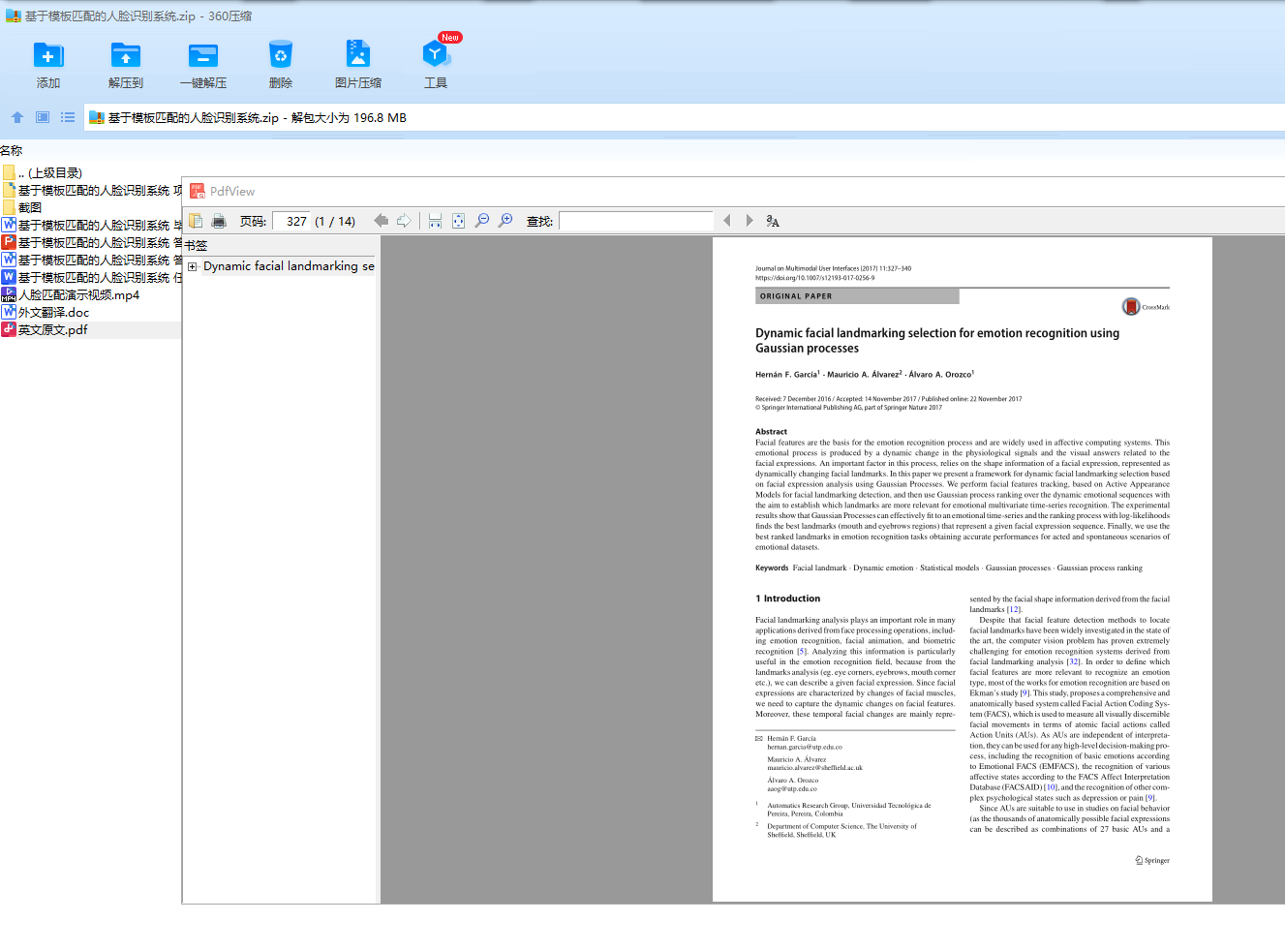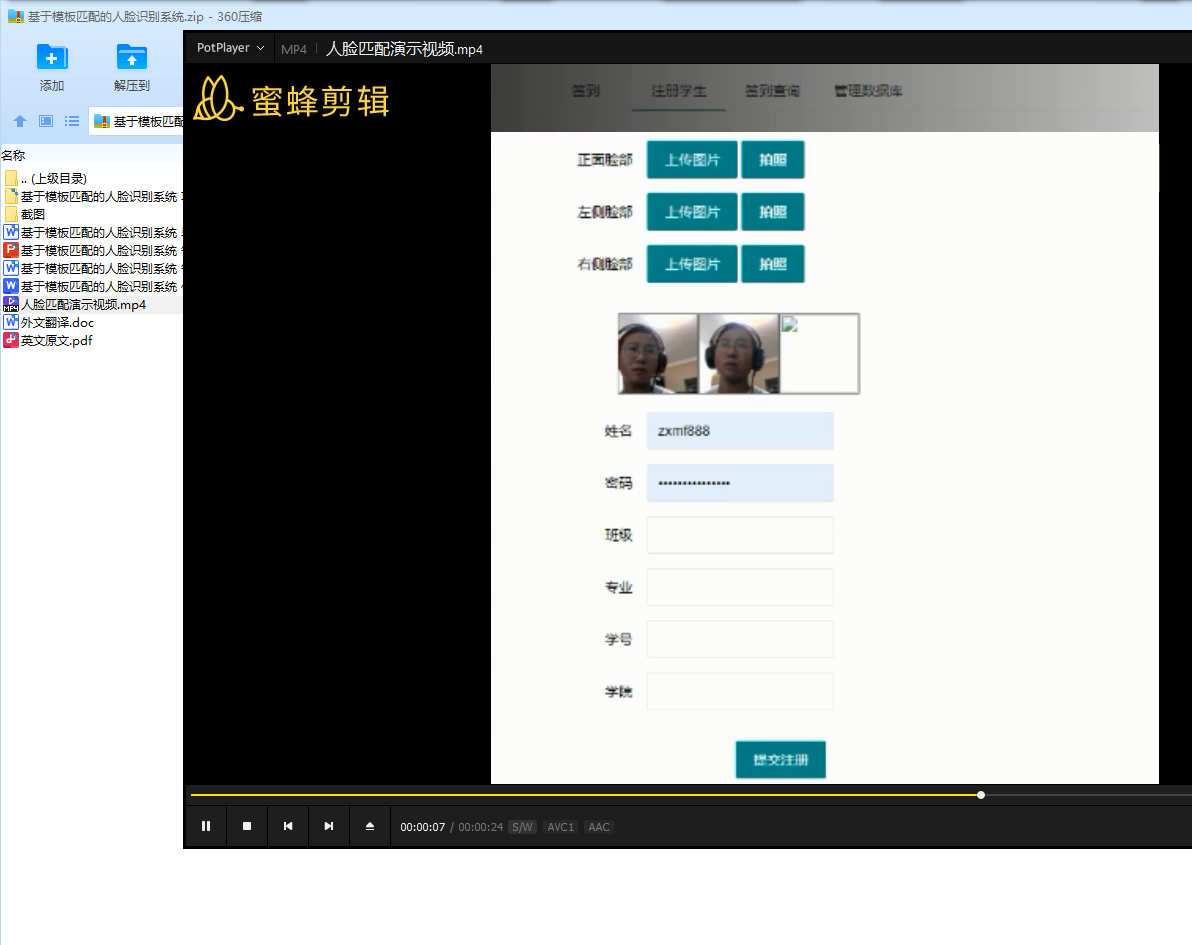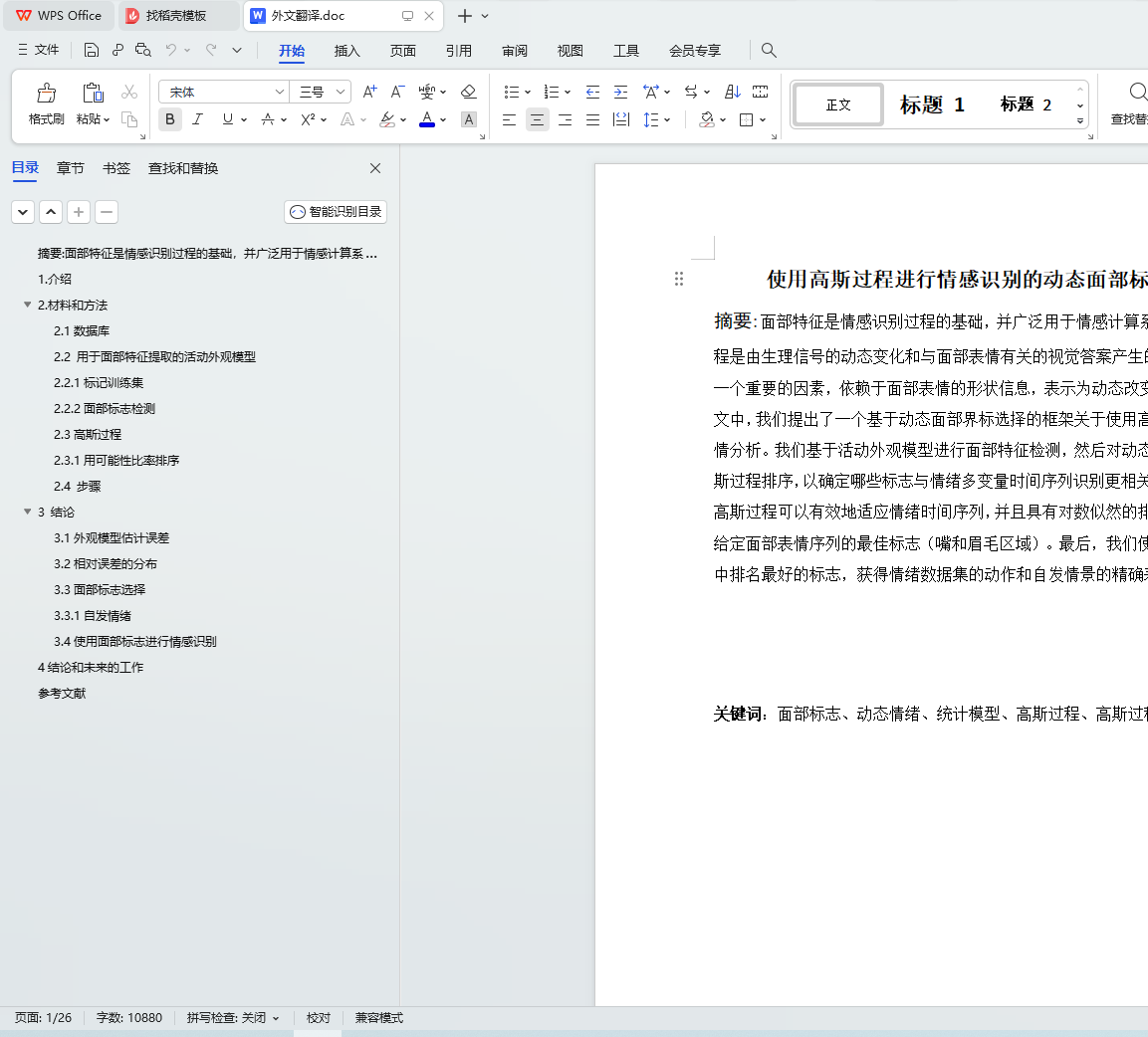摘 要
模板匹配算法是一种常用的图像匹配方法,它的原理是将一张待匹配的图像与一个预先准备好的模板图像进行比对,寻找两者之间的相似度。在人脸识别领域,模板匹配算法也被广泛应用。基于Python的模板匹配算法的人脸识别系统,就是利用这种算法实现人脸识别的一种应用。
该系统主要分为两个步骤:人脸检测和特征点匹配。首先,系统使用OpenCV库进行人脸检测,将输入的图像中的人脸区域提取出来。然后,再使用OpenCV库提供的特征点提取算法,将人脸区域中的特征点提取出来。接下来,将提取出来的特征点与预先存储在系统中的特征点模板进行匹配,从而判断该人脸是否为已知人脸中的一员。这里的特征点模板是指已知人脸的特征点的集合,可以通过事先采集一些已知人脸的图像,提取其中的特征点,从而得到一个特征点模板。
该系统的优点是实现简单,易用,准确率较高。缺点是需要事先采集一些已知人脸的图像,提取其中的特征点,构建特征点模板,这需要一定的人力和时间成本。同时,该系统的识别准确率还与模板匹配算法的性能有关,如果算法本身的性能不够好,识别准确率也会受到影响。
本文介绍了一种基于Python的模板匹配算法的人脸识别系统。该系统首先使用OpenCV库进行人脸检测和特征点提取,然后将提取出的特征点与预先存储在系统中的特征点模板进行匹配,从而实现人脸识别。该系统在实现上简单、易用,且具有较高的准确率。本文详细介绍了该系统的设计思路、实现方法以及实验结果,并对该系统进行了分析和评价。最后,本文指出了该系统存在的不足之处,并提出了改进方向。
关键词:模板匹配;人脸识别;tensorflow;python ;SQLite
Abstract
Template matching algorithm is a commonly used image matching method. Its principle is to compare an image to be matched with a pre-prepared template image to find the similarity between the two. In the field of face recognition, template matching algorithms are also widely used.
The face recognition system based on Python template matching algorithm is an application of face recognition by using this algorithm. The system is mainly divided into two steps: face detection and feature point matching. First, the system uses the OpenCV library for face detection, extracting the face area in the input image. Then, the feature points in the face area are extracted by using the feature point extraction algorithm provided by the OpenCV library. Next, the extracted feature points are matched with the feature point template previously stored in the system to determine whether the face is a member of the known face.
The feature point template here refers to the set of feature points of the known face, which can extract a feature point by collecting some images of the known face in advance, so as to get a feature point template. The advantages of this system are simple to implement, easy to use and high accuracy. The disadvantage is that it is necessary to collect some images of known faces in advance, extract the feature points, and construct the feature point template, which requires certain manpower and time cost. At the same time, the recognition accuracy of the system is also related to the performance of the template matching algorithm. If the performance of the algorithm itself is not good enough, the recognition accuracy will also be affected. This paper introduces a face recognition system with a Python-based template matching algorithm.
The system first uses the OpenCV library for face detection and feature point extraction, and then matches the extracted feature points with the feature point template stored in the system in advance, so as to realize face recognition. The system is simple, easy to use and has high accuracy. This paper details the design idea, implementation method and experimental results of the system, and analyzes and evaluates the system. Finally, this paper points out the shortcomings of the system and proposes the improvement direction.
Key words: template matching; face recognition; tensorflow; python; SQLite
目 录
摘 要
Abstract
1 绪论
1.1课题背景及意义
1.2 国内外研究现状
1.2.1国内研究现状
1.2.2国外研究现状
1.3 本课题主要工作
2 系统开发环境
2.1 python简介
2.2 人脸识别简介
2.3 SQLite
2.4 Django介绍
2.5 TensorFlow
3 系统分析
3.1 可行性分析
3.1.1 技术可行性
3.1.2操作可行性
3.1.3 经济可行性
3.1.4 法律可行性
3.2需求分析
3.2.1 功能需求分析
3.2.2 性能需求分析
3.3开发环境分析
3.4界面需求
4 系统设计
4.1系统设计原则
4.2系统流程设计
4.2.1系统开发流程
4.2.2 添加信息流程
4.2.3 人脸识别流程
4.3 系统功能设计
4.4 数据库设计
4.4.1 数据库设计原则
4.4.2 数据库实体
4.4.3 数据库表设计
5系统实现
5.1 登录
5.2 注册
5.3 识别签到
6系统测试
6.1测试环境与条件
6.2功能测试
6.3可用性测试
6.4测试结果分析
结 论
致 谢
参考文献
